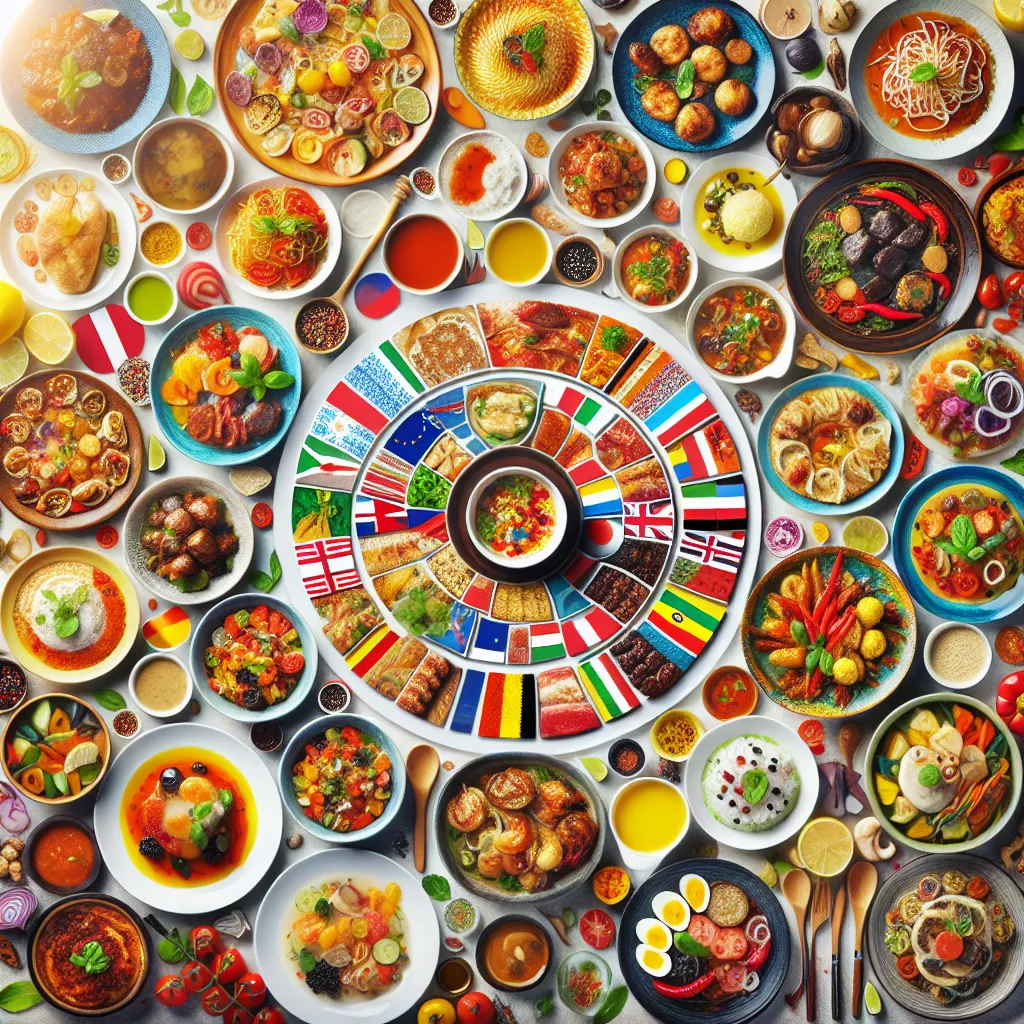From Spicy to Sweet: A Culinary Journey Across Continents
Embarking on a culinary journey across continents can be an eye-opening experience, exposing you to a diverse range of flavors and tastes that are a world away from the familiar. From the fiery heat of Thai curries to the delicate sweetness of French pastries, exploring tastes around the world offers a tantalizing adventure for the palate. One of the most striking aspects of this journey is the transition from spicy to sweet flavors that varies across different cultures and regions.
Starting in Asia, particularly in countries like Thailand, India, and China, you encounter a profusion of spicy and savory dishes that are characterized by their complex and intense flavors. These cuisines often feature a combination of chili peppers, fragrant spices, and fresh herbs to create dishes that are fiery and bold. Thai cuisine, for example, is renowned for its vibrant and spicy curries, where the heat from chilies is balanced with sweet, tangy, and savory elements, creating a harmonious explosion of flavors.
As you move towards the Middle East and Mediterranean regions, the transition from spicy to sweet becomes more pronounced. Here, the emphasis shifts towards the use of aromatic spices like cinnamon, nutmeg, and cloves, as well as the incorporation of dried fruits, honey, and syrupy reductions. The resulting dishes marry gentle sweetness with subtle spices, yielding a rich and indulgent flavor profile. Baklava, a popular Middle Eastern dessert made of layers of filo pastry, nuts, and sweet syrup, exemplifies this delightful fusion of sweet and fragrant flavors.
Continuing the journey into Europe, you encounter a plethora of sweet delights that dominate the culinary landscape. From the flaky croissants of France to the creamy gelato of Italy, European cuisine beckons with its emphasis on decadent desserts and sweet indulgences. The use of ingredients like chocolate, vanilla, and fruits takes center stage, crafting desserts that are both visually appealing and sublimely sweet.
Ultimately, this culinary expedition from spicy to sweet encapsulates the remarkable diversity and richness of global cuisine. It is a testament to the way in which flavors and tastes can not only vary across different regions but also reflect the unique cultural and historical influences that shape culinary traditions around the world.
Global Gastronomy: Discovering New Flavors and Ingredients
Global gastronomy offers a mesmerizing array of flavors and ingredients from around the world, inviting us to embark on a culinary journey like no other. The exploration of tastes from different cultures not only expands our palates but also opens our minds to the rich tapestry of global cuisine. Whether it’s the fiery spices of India, the umami-rich dishes of Japan, or the aromatic herbs of the Mediterranean, each region brings its own distinctive culinary heritage to the table.
One of the most exciting aspects of delving into global gastronomy is the opportunity to discover new and exotic ingredients. From the piquant tang of tamarind in Thai cuisine to the earthy allure of truffles in Italian dishes, each ingredient adds a unique dimension to the culinary experience. Embracing global flavors also means embracing a diverse range of cooking techniques, from the delicate art of sushi-making to the robust flavors of slow-cooked tagines.
Exploring tastes around the world not only satisfies our cravings but also fosters an appreciation for different cultures and traditions. Through food, we can gain a deeper understanding of the histories and customs that have shaped culinary practices in different parts of the world. Ultimately, global gastronomy transcends the act of eating and becomes a celebration of diversity, bringing people together through the universal language of food.
Cultural Cuisine: Embracing Diversity through Food
When it comes to expanding palates and exploring tastes around the world, one cannot overlook the significance of cultural cuisine in embracing diversity through food. Each culture has its own unique culinary traditions, ingredients, and cooking techniques passed down through generations. By delving into the culinary delights of different cultures, individuals can gain a deeper understanding and appreciation for the diverse tapestry of our world.
Exploring tastes around the world offers a rich tapestry of flavors, aromas, and textures that enriches our culinary experiences. From the spicy and aromatic dishes of India to the umami-rich flavors of Japanese cuisine, the world is a treasure trove of gastronomic wonders waiting to be discovered and savored. Embracing diverse cultural cuisine allows us to celebrate the unique heritage and traditions of different communities, fostering a sense of unity and understanding.
Furthermore, experiencing diverse culinary traditions provides an opportunity to connect with people from different backgrounds. Sharing a meal together not only fosters a sense of camaraderie but also opens the door to meaningful cultural exchanges. Through food, individuals can transcend language barriers and forge connections that celebrate our shared humanity.
In conclusion, exploring tastes around the world and delving into cultural cuisine is a remarkable way to embrace diversity and foster cultural understanding. The wealth of flavors and culinary artistry across the globe serves as a testament to the beauty of our differences and the shared joy of savoring delicious food.




